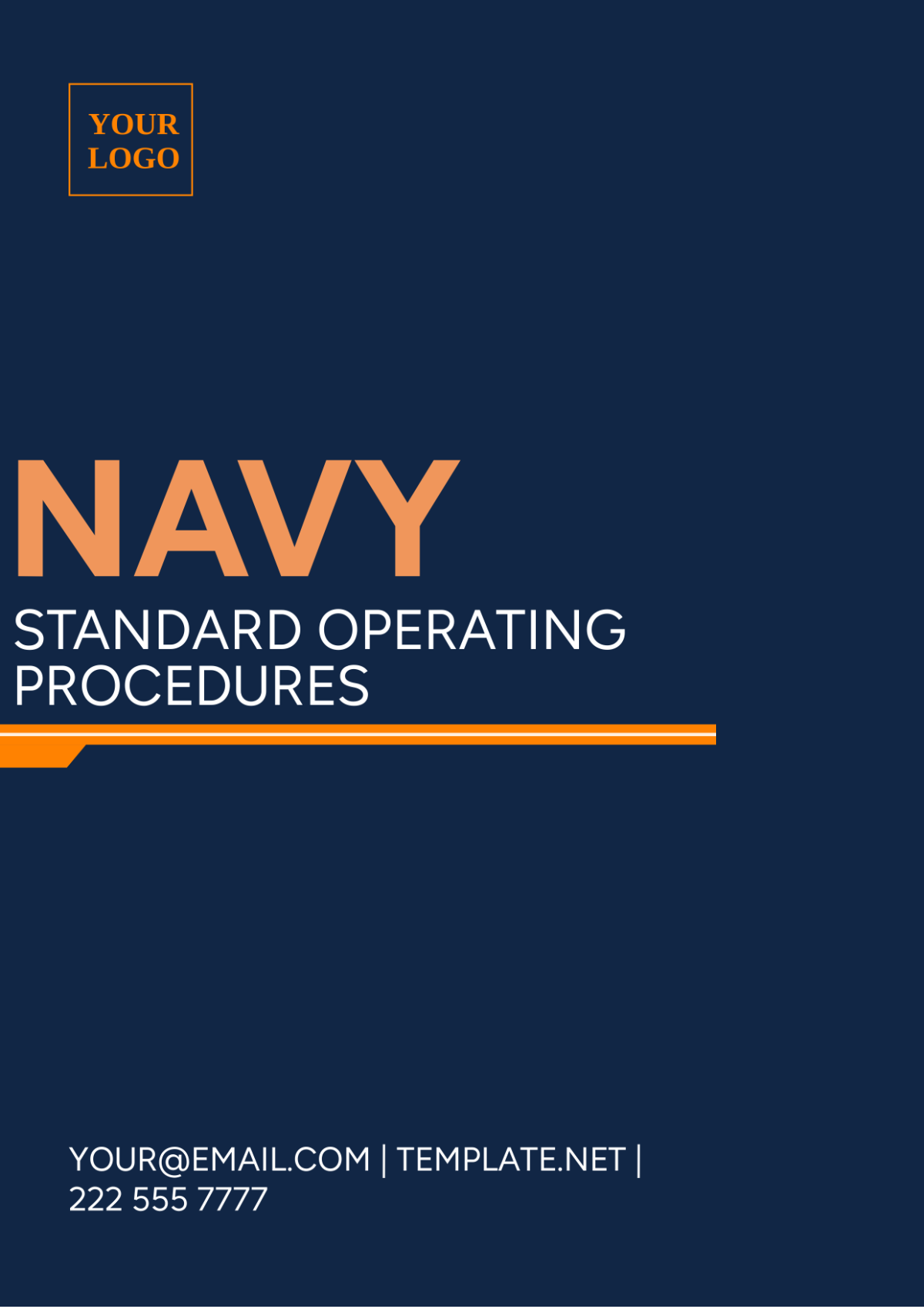Free Navy SOP

1. Introduction
This Standard Operating Procedures (SOP) document outlines the protocols for shipboard operations, navigation, communication, watch standing, and tactical maneuvers to ensure the safety, security, and readiness of naval vessels during missions and deployments. This SOP is designed to provide comprehensive guidance to all personnel involved in naval operations, from commanding officers to enlisted crew members, in executing their duties effectively and efficiently.
2. Scope
This SOP applies to all naval vessels under the jurisdiction of [insert naval command], including but not limited to aircraft carriers, destroyers, frigates, submarines, and auxiliary ships. It encompasses routine operations, special maneuvers, emergency procedures, and communication protocols essential for maintaining operational readiness and mission success.
3. Definitions
Commanding Officer (CO): The officer in charge of the vessel is responsible for its overall operation and safety.
Watch stander: A designated individual responsible for monitoring specific systems or areas of the vessel during designated watch periods.
Tactical Maneuvers: Strategic movements performed by the vessel to achieve mission objectives while maintaining a tactical advantage.
Navigation: The process of plotting and controlling the course and position of the vessel during transit.
4. Responsibilities
Commanding Officer: The commanding officer holds the responsibility for ensuring overall adherence to this Standard Operating Procedure. This role includes making sure that all personnel are not only trained but also proficient in their individually assigned duties.
Department Heads: Department heads are responsible for ensuring that their personnel are adequately trained, equipped, and prepared to execute their assigned tasks by this SOP.
Watchstanders: Watchstanders must diligently perform their duties as outlined in this SOP, maintain situational awareness, and promptly report any deviations or incidents to the appropriate chain of command.
5. Shipboard Operations
Navigation: All navigation procedures must adhere to established protocols outlined in naval regulations and international maritime laws. This includes maintaining accurate charts, conducting regular navigational fixes, and adhering to designated shipping lanes.
Communication: Effective communication is essential for safe and efficient shipboard operations. Standard communication protocols must be followed, including the use of designated radio frequencies, signal flags, and visual signaling techniques.
Watch standing: Continuous watch standing is essential for maintaining situational awareness and responding promptly to any threats or emergencies. Watch schedules must be established and adhered to, ensuring that all critical areas of the vessel are monitored at all times.
Tactical Maneuvers: Tactical maneuvers must be conducted by established procedures and mission objectives. This includes maintaining proper formation, executing evasive maneuvers when necessary, and coordinating with other vessels in the area.
6. Emergency Procedures
General Emergencies: In the event of a general emergency, all personnel must adhere to established emergency protocols, including muster stations, emergency drills, and rapid response procedures.
Fire and Damage Control: Fire and damage control procedures must be followed rigorously to mitigate the risk of damage to the vessel and ensure the safety of all personnel onboard. This includes proper firefighting techniques, damage assessment procedures, and the use of emergency firefighting equipment.
Man Overboard: In the event of a man overboard situation, immediate action must be taken to locate and recover the individual while minimizing the risk to the remaining crew members.
7. Training and Qualifications
Initial Training: All personnel must undergo initial training on shipboard operations, including navigation, communication, watch standing, and emergency procedures, before assuming their assigned duties.
Continuing Education: Ongoing training and proficiency assessments are essential for maintaining operational readiness and effectiveness. Regular drills, simulations, and training exercises must be conducted to ensure that personnel remain proficient in their assigned tasks.
8. Conclusion
This SOP serves as a comprehensive guide for shipboard operations, navigation, communication, watch standing, and tactical maneuvers. Adherence to this SOP is essential for ensuring the safety, security, and readiness of naval vessels during missions and deployments. Any deviations or updates to this SOP must be approved by the appropriate chain of command.
9. Approval
This SOP has been reviewed and approved by [Insert Name and Title of Approving Authority] on [Insert Date]. Any revisions or updates to this SOP must be approved by the same authority.

[Approver’s Name]
[Approver’s Role]
[Approval Date]
- 100% Customizable, free editor
- Access 1 Million+ Templates, photo’s & graphics
- Download or share as a template
- Click and replace photos, graphics, text, backgrounds
- Resize, crop, AI write & more
- Access advanced editor
A Navy SOP (Standard Operating Procedure) is a structured document that provides detailed instructions for carrying out various tasks and operations within the United States Navy. These procedures ensure consistency, efficiency, and compliance with Navy regulations and protocols in different operational scenarios.





























